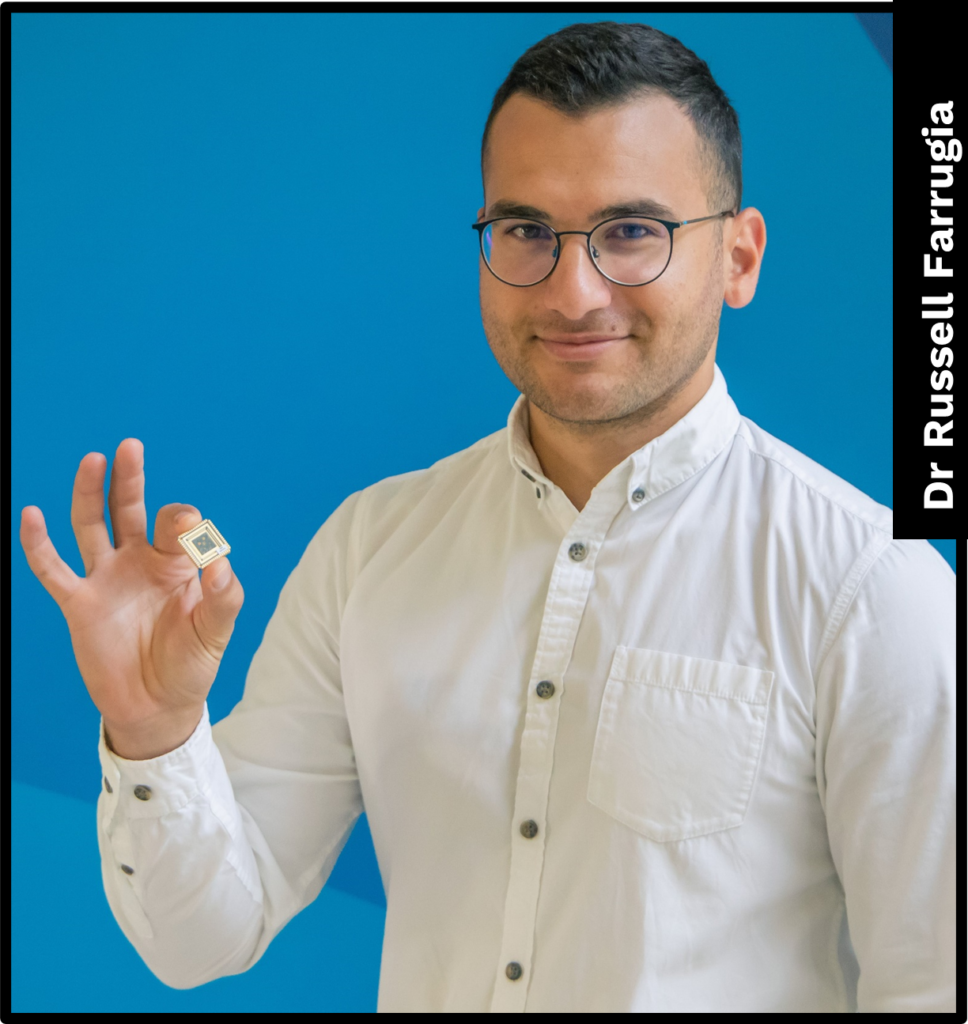How good is the air quality inside buildings? DR RUSSELL FARRUGIA, and PhD students BARNABY PORTELLI and MATTHEW MELI, are part of an international consortium looking to create a system to find out.
Air quality is a phrase that has got a lot of traction as of late and as we continue to learn about the health hazards of humans breathing bad air, we can expect that to intensify. Yet it’s good to remember that the term ‘air quality’ doesn’t just refer to the outside environment, but also to that inside buildings.

In order to get to grips with how best to monitor and manage the air quality found indoors through gas sensing technologies, a consortium made up of twenty-six partners hailing from six EU member states is now in place. The partners include companies like Philips and Infineon, as well as other research institutes and Universities like Fraunhofer ENAS, the Eindhoven University of Technology, and the University of Malta (UM).
“UM has two main roles in this multinational project entitled ESAIRQ,” explains Dr Russell Farrugia, who has been on the project since its inception. “Firstly, there is the development of a network made up of over 100 air quality monitoring wireless sensor nodes. Secondly, there is the development of a gas sensor based on infrared spectrometry.”
For this to happen, the Faculty’s building at the University of Malta will now have over 100 such prototype nodes installed with the aim of monitoring environmental values of things like temperature and humidity, as well as that of numerous gases including volatile organic compounds (VOCs), carbon dioxide (CO2) and particulate matter (PM).
“The wireless communication protocol selected for these nodes is LoRa, a Low Power Wide Area Network (LPWAN) protocol developed specifically for the Internet of Things (IoT) to enable low power communication over distances of up to 2km in urban environments,” adds Matthew Meli, whose PhD revolves around the project. “Moreover, given the star topology used, if one sensor node fails, all the other nodes can continue working normally.”

As one can imagine, with each of the 100-plus nodes collecting data on a regular basis, the final amount of information will be huge. Yet this data is exactly what the team working on the ESAIRQ project is after.
“The big data attained from the sensors is being stored in a cloudbased database,” says Barnaby Portelli, who is also reading for his PhD. “This way, we not only have the possibility of making big data analysis, but it also means that our partners on the project can see and access the results of the study. Moreover, our sensor nodes have multiple interfaces available to test additional, newly developed sensors provided by our partners in the project.”
Even so, there is one pitfall that the consortium is looking to have sorted out in the near future, which is that of making the battery powered sensor nodes cheaper to buy and longer lasting.
“Part of my research area is to drastically extend the battery life of the sensor nodes by focusing on ultra-low power design,” Matthew continues. “At the moment, the air quality sensor nodes that are on the market are not only expensive but also have an incredibly short battery life. Our aim now is to achieve a system where sensor nodes are able to perform air quality measurements autonomously for multiple years.”
On top of all this, the consortium is developing an innovative portable device capable of sensing a range of gases using near-infrared spectrometry to detect multiple gases.
“The fundamental component of the gas sensor is a 2mm-diameter scanning diffraction grating designed in-house and fabricated using silicon semiconductor technology,” Barnaby explains. “The gases we are looking to detect and monitor include Carbon Dioxide (CO2) and Methane (CH4).”

But, you may ask yourself, what are the advantages of such studies?
“Well, through such a project, Europe will gain essential knowledge on gas-, fine-particle-, and pathogen-sensing technologies that could have huge benefits for people’s health,” Russell continues.
Indeed, this could help spell the end of the sick building syndrome, which is a phenomenon that sees occupants of certain residential or office buildings experience numerous, non-specific symptoms, such as headaches, fatigue, or eye, nose and throat infections. As the name states, this is normally attributed to the bad air quality inside buildings.
Moreover, while speaking to the trio, they all agree that this could be the first step towards having smart, artificially intelligent systems that don’t just monitor air quality, but also manage it. In other words, the system itself could identify what harmful gases may be in the air and be capable of remedying the situation by changing the air flow automatically.
Of course, that is something that is much easier said than done, particularly as such a system would also need to tailor its response based on multiple factors including how many people are in the building at any given time.
Even so, the potential of such a system is huge and the benefits to both individuals and business could be even bigger: we could decrease illnesses, increase productivity and brighten people’s moods all through a smart system like this. And if that does happen, part of the thanks should definitely go to the Department of Microelectronics and Nanoelectronics within the Faculty of ICT!

